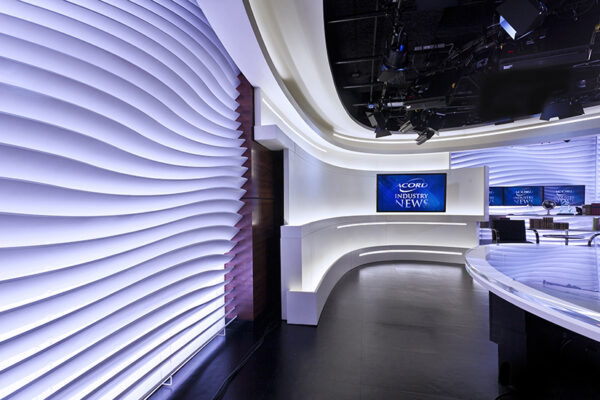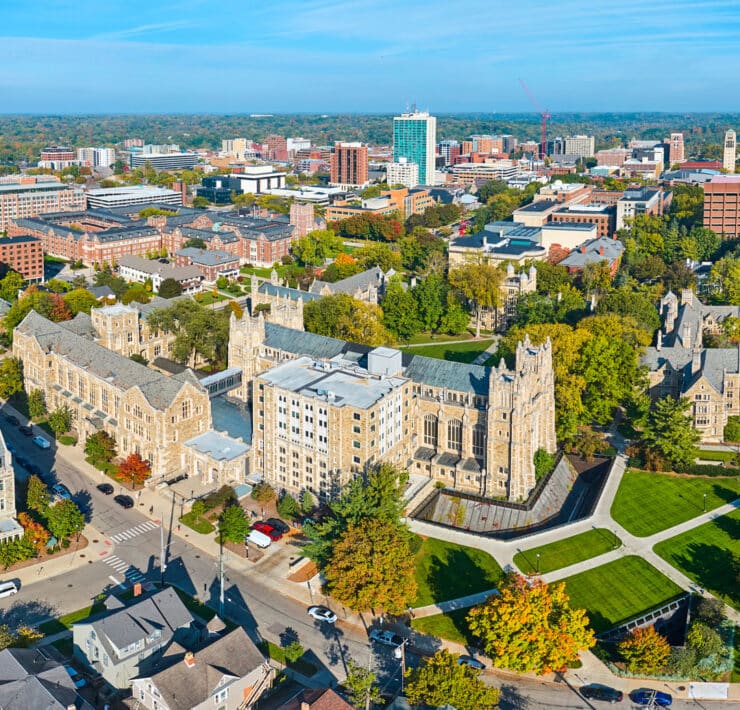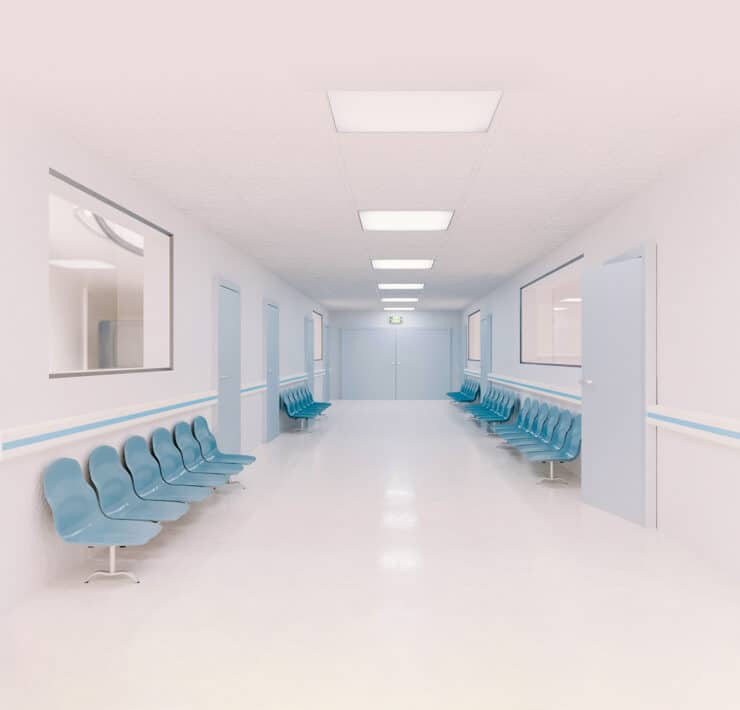|
Getting your Trinity Audio player ready...
|
“As a young architectural designer and broadcast scenic designer more than 20 years ago, I wouldn’t have guessed that the fields of architecture and broadcast media would become as intertwined as much as they have today, to form a new emerging type of corporate interior and workplace environment,” says Peter Provost, president and director of design at Provost Studio.
But thanks to his unique background, which blends the architecture and advertising paths, his ability to collaborate “closely with companies to understand their brands and develop custom branded environments and interiors” has poised him for success in the new era of corporate designs that utilize digital media elements. He pulls from his experience in both paths to intuitively understand a company’s brand and express that within the scenic environment.
At the start of his career, Provost notes that the workplace “was designed to accommodate things like natural daylight and ventilation, building systems, program adjacencies, and environmentally responsible materials. It was the job of interior architecture to provide a healthy, inspirational place for people to work as well as communicate the values, culture, and brand of the company it expressed.”

Today, companies are embracing video as a preferred brand communication strategy to reach their target audiences and customers organically, the president and design director explains. “Large video walls and interactive touch displays are now commonplace in corporate lobbies and seen as essential visual storytelling elements to welcome visitors and learn more about your company,” he explains. As a result, architecture and design firms have incorporated digital media practices into their work.
Technology has only gotten less expensive and easier to use, Provost notes. He cites the iPhone as an example—its abilities have improved to the point where it can replace traditional broadcast cameras in a corporate setting.
“What we try to do as designers, specifically through digital media, is to help the client more effectively communicate their message through flexibility that we create with the display technology,” Provost says on the studio’s approach to both commercial broadcast and corporate video clients. “We’ll look holistically at how [the client is] presenting themselves or what the story is that we need to express visually in their scenic environment,” Provost explains.
Corporate brands have become their own broadcasters, he adds. “They use the web and social media channels as their distribution network and develop their own channels full of ‘live-to-tape’ or prerecorded programming content.” Provost Studio helps clients identify and maintain a consistent “look and feel” and engage their specific viewing audience.

Provost cites a time he collaborated with a widely recognized medical center to create an inviting broadcast studio for educational video content but one that didn’t resemble a typical hospital setting. The medical center was interested in recognizing the history and innovation of the institution but as some of its content is patient-facing, it requested a visually approachable space.
“They didn’t want it to feel like your home, but they wanted it to feel more like a hospitality environment, a relaxing hotel lobby, where important content could be shared with its patients from a warm, inviting atmosphere,” Provost shares. “Understanding the audience/content dynamic is especially important when designing these types of projects.”
Aside from telling a story with the scenic environment, corporate broadcast clients typically require Provost Studio to focus on handling side constraints. “They’re usually tight spaces,” the president explains. “So, we end up having to pack a lot of flexibility into a 900-square-foot studio as opposed to a 2,500- or 5,000-, or even a 10,000-square-feet studio. We’re masters at building flexibility into our spaces for all of our clients.”
To optimize these small spaces while still providing a broadcast interior that reflects a company’s brand and story, Provost Studio often creates spaces with movable scenic elements, where walls and video displays can be shifted by a client. “I like to think of it as like a Swiss Army knife; we will have walls that pivot or open or close,” Provost says. “There’s literally something behind the walls or where large video displays come together in a different way that transforms the space.”

A recent project for Fox Television Stations featured both static and dynamic video displays. The design combines permanent scenic and LED video walls as background elements, while other LED video walls can track in and out of the shot to provide different digital backgrounds for the space. Provost Studio was also responsible for designing and producing the high-resolution graphics for the LED video wall displays.
The Fox-5 DC Studio headquarters in Bethesda, Maryland, is the largest commercial broadcast studio project—over 10,000 square feet—that Provost Studio has worked on in the United States yet. It officially launched on July 24, 2021. The project includes both virtual and physical studios as well as a main newsroom. The studio has informal presentation spaces and movable platforms, a performance area, a functional kitchen, and a main anchor area that includes an 8-by-22-foot curved LED wall. “[The wall] splits in half and rotates around 270 degrees,” Provost says. “It provides different ways to frame the shot and present content in the space.”
The newsroom in the Fox-5 DC headquarters features three main on-camera areas with an interview area, social media stand-up area, and main news desk area. The main presentation desk spins and pivots like a turntable would, giving the director the ability to change the background by rotating the desk.

“Again, that [design] speaks to our focus on providing scenic elements as well as AV displays and lighting that allows us flexibility,” Provost describes. “That’s one thing that ties both nontraditional and traditional broadcast clients—everyone wants flexibility; everyone wants the ability to have one space do multiple things for them as they’re continually creating different types of video content and presentation formats.
“I can’t wait to see how the future of workplace evolves as brands continue to be their own broadcasters, pushing the integration of corporate office environments, video content, and brand communication,” he continues. “Provost Studio is excited to continue to collaborate with these forward-looking clients, exploring the innovative opportunities that lie ahead in broadcast and video production technology, [and] connecting brands with audiences in new ways.”







